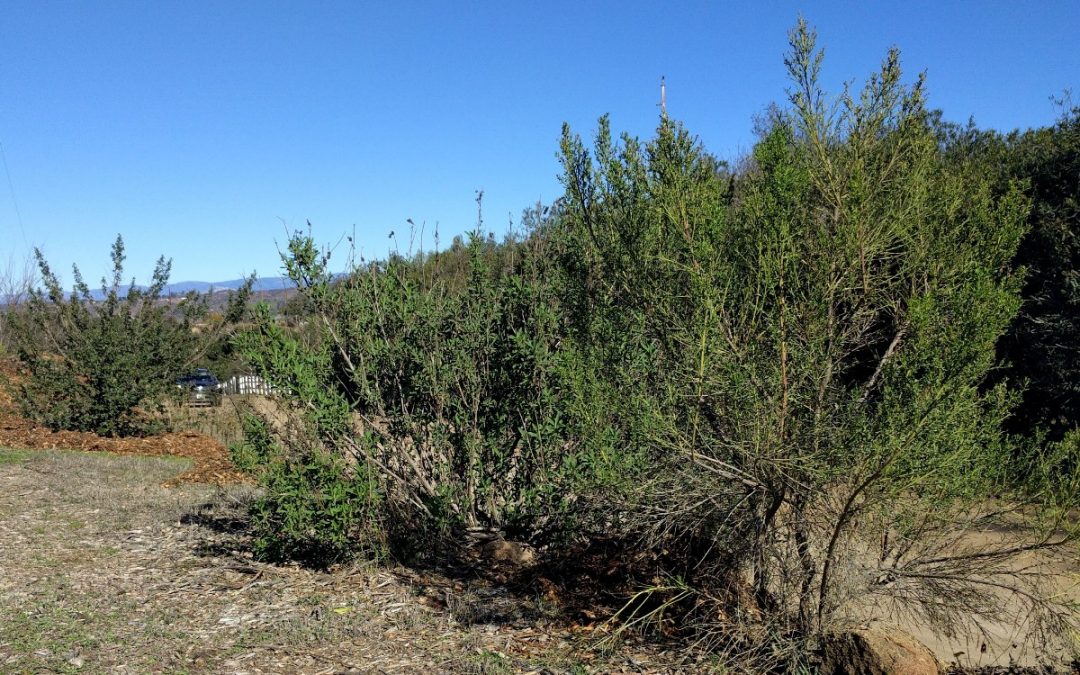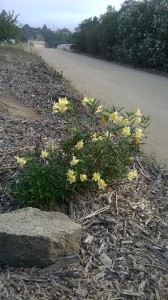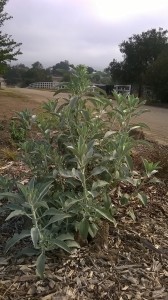A couple of the native plants I put in last fall and winter, 2014:
The goal is to grow a hedgerow along the dirt road in order to mitigate dust created by cars and give more privacy to the yard and house. I’m using native plants for a number of reasons. They’re beautiful, for one. Also, after a year or two they’ll never ask me for another drop of water. In fact, if we get a wet winter they’ll be established and independent after only the next couple months. Further, they fit in to the larger ecosystem; they belong. So native bees use their pollen, hummingbirds drink their nectar, scrub jays eat their berries, and on and on.
The University of California recently conducted a study of native plant hedgerows on farms, and they found pest control benefits. “Tomato fields adjacent to [native] hedgerows required fewer pesticide treatments than the tomato fields without hedgerows.” Among other reasons, native insects living in the hedgerows fed on crop pests and thereby reduced the pest populations.
As the summer winds down, my mind turns from peppers and peaches to engelmann oaks and purple nightshade and sugarbush and black sage and elderberry and toyon. I’m getting excited to hike around the undeveloped parts of our yard as well as the neighborhood to collect seeds to plant along the roadside and restore the vegetation that likely existed before the road and our house were developed. Buckwheat, sumac, and ceanothus are on my radar, and my son Cass has already started gathering coast live oak acorns.
For more on which natives I’ve planted and why, see my post, “Natives at the roadside.”






Hi Greg. A SoCal native favorite of mine is the Hollyleaf Cherry (Prunus ilicifolia). A beautiful tree or bush depending on pruning, and it prunes well. The ‘cherries’ are tasty even if mostly seed (pick when purple/black). My kids love them. The plant is very fecund, and near 100% success rate growing from seed. However, there is a wide range of traits when grown from seed, some get huge, some stay tiny, some taste better. Historically, this plant was an important food source for the local 1st nations tribes. If your ever interested in trying these I can root some cuttings of my best specimens for you. I’m in Vista. Just let me know.
-David